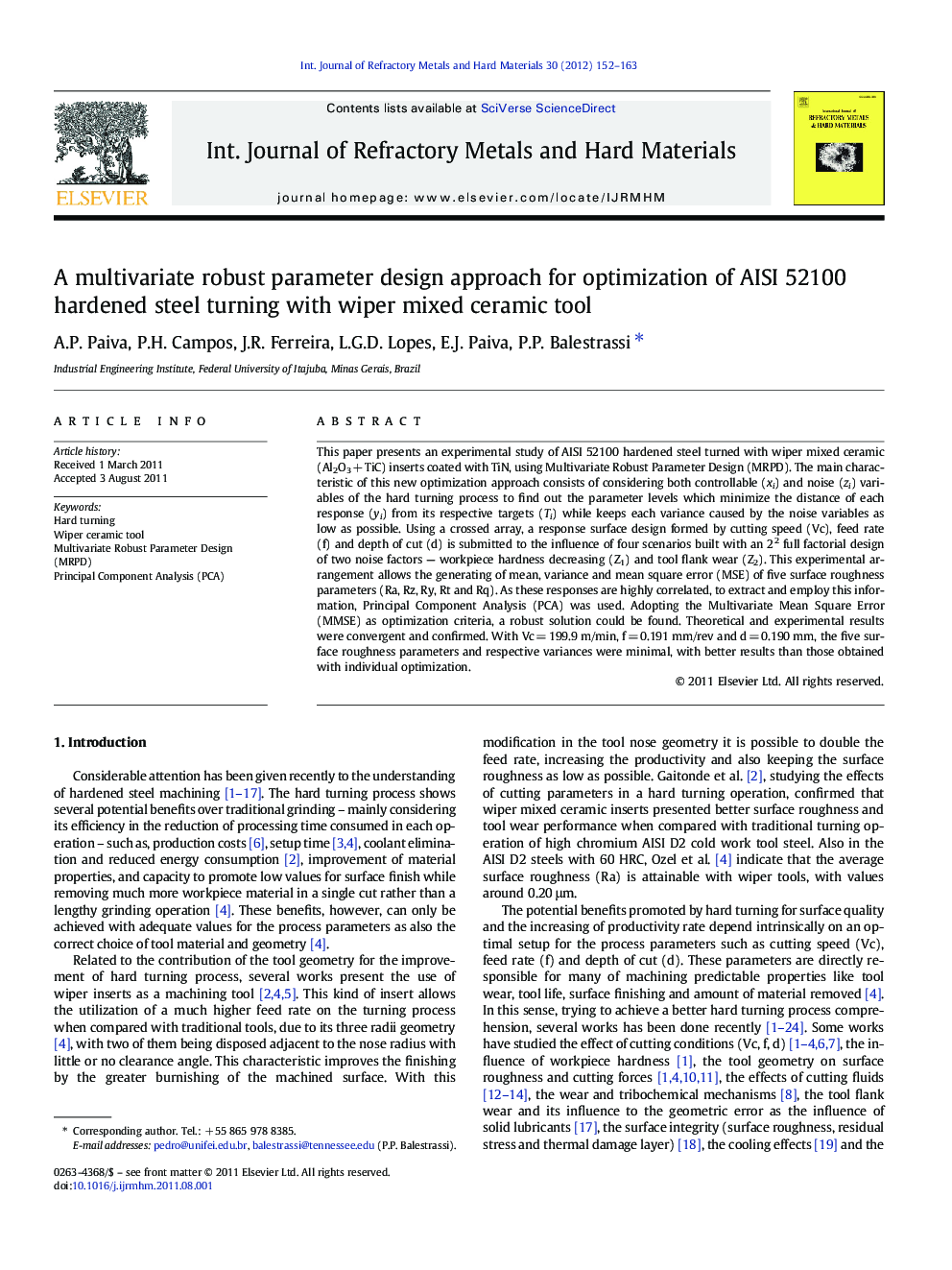| Article ID | Journal | Published Year | Pages | File Type |
|---|---|---|---|---|
| 1603770 | International Journal of Refractory Metals and Hard Materials | 2012 | 12 Pages |
This paper presents an experimental study of AISI 52100 hardened steel turned with wiper mixed ceramic (Al2O3 + TiC) inserts coated with TiN, using Multivariate Robust Parameter Design (MRPD). The main characteristic of this new optimization approach consists of considering both controllable (xi) and noise (zi) variables of the hard turning process to find out the parameter levels which minimize the distance of each response (yi) from its respective targets (Ti) while keeps each variance caused by the noise variables as low as possible. Using a crossed array, a response surface design formed by cutting speed (Vc), feed rate (f) and depth of cut (d) is submitted to the influence of four scenarios built with an 22 full factorial design of two noise factors — workpiece hardness decreasing (Z1) and tool flank wear (Z2). This experimental arrangement allows the generating of mean, variance and mean square error (MSE) of five surface roughness parameters (Ra, Rz, Ry, Rt and Rq). As these responses are highly correlated, to extract and employ this information, Principal Component Analysis (PCA) was used. Adopting the Multivariate Mean Square Error (MMSE) as optimization criteria, a robust solution could be found. Theoretical and experimental results were convergent and confirmed. With Vc = 199.9 m/min, f = 0.191 mm/rev and d = 0.190 mm, the five surface roughness parameters and respective variances were minimal, with better results than those obtained with individual optimization.
Graphical abstractFigure optionsDownload full-size imageDownload as PowerPoint slideHighlights► We simultaneously examine five surface metrics of AISI 52100 hardened steel turning with wiper mixed ceramic tools. ► Control factors and noise factors are considered. ► A Multivariate Robust Parameter Design Optimization approach is proposed. ► Means and variances of the metrics are optimized. ► Better results are obtained when compared with traditional approaches.
